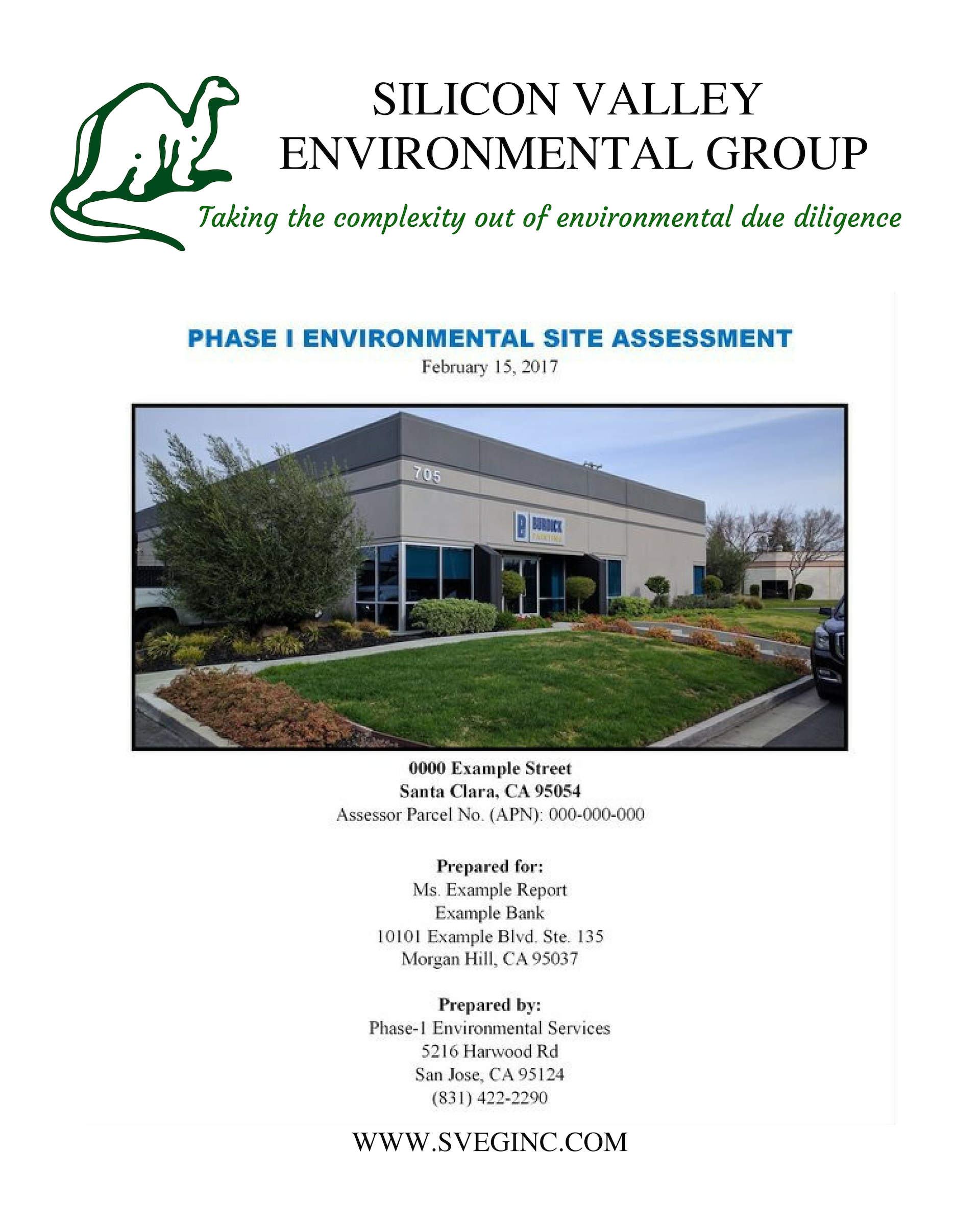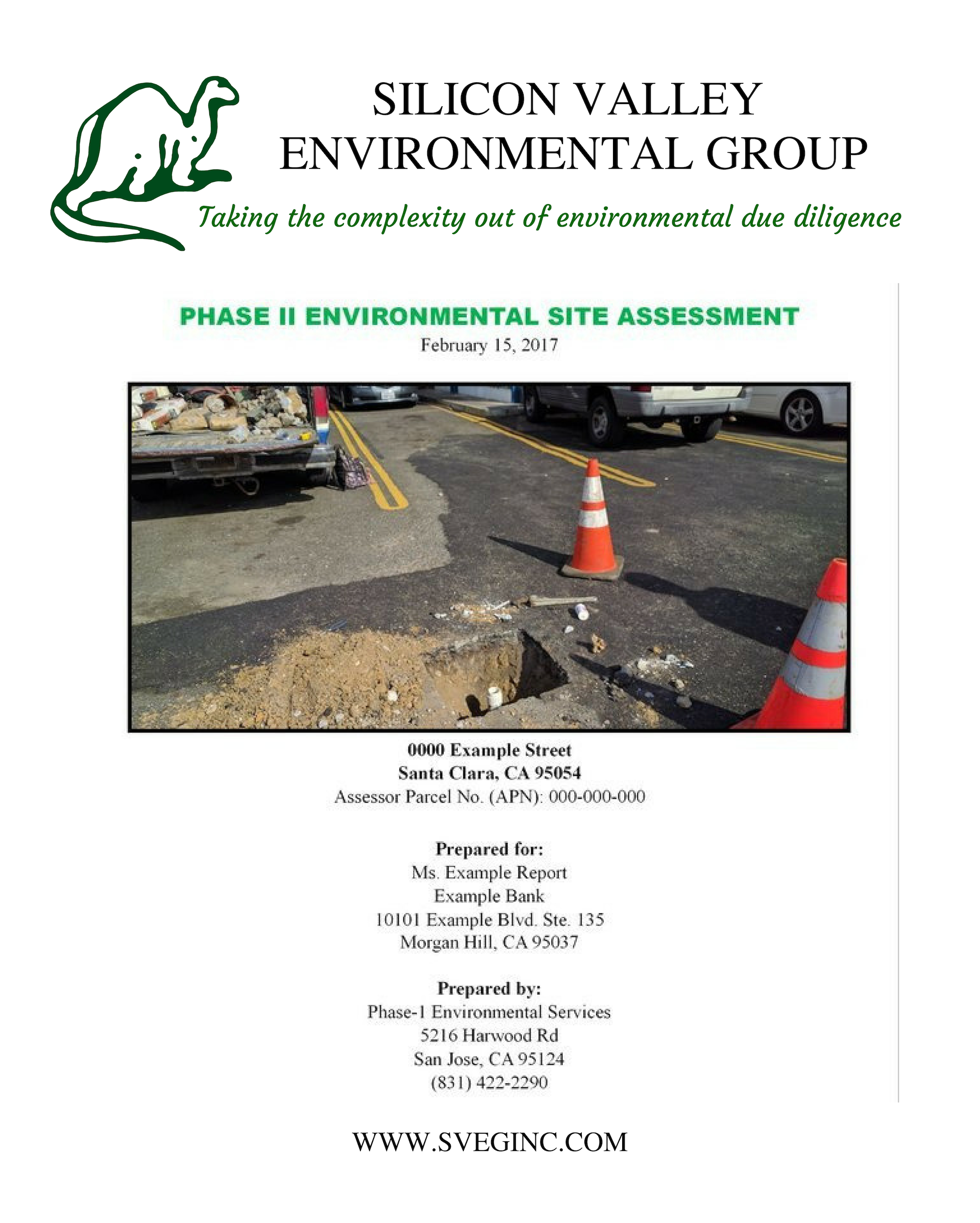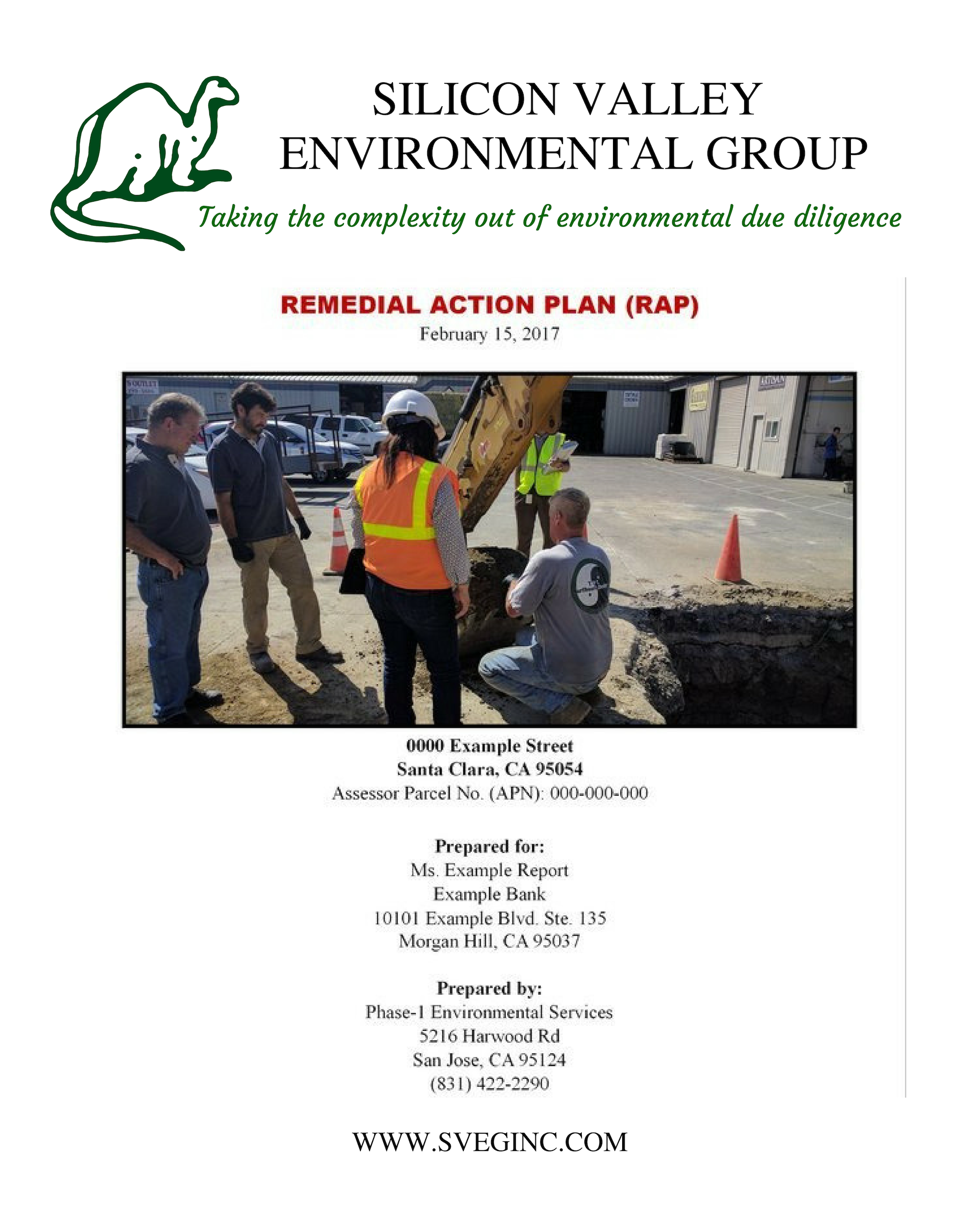Services
SERVICES
- Phase I Environmental Site Assessment Reports
- Transaction Screen Process Reports (TSP or ETS's)
- Records Search Risk Assessment (RSRA) - SBA Compliant
- Environmental Desktop Reports
- Preliminary EDR (Environmental Database Report) Review
- Phase II Environmental Site Assessments (Subsurface)
- Phase III Environmental Site Assessments
- Underground Storage Tank Removals
- Groundwater Well Installation & Sampling
- Soil Management Plans & Indoor - Soil Vapor Sampling

Environmental Site Assessment Report
A Phase I Environmental Site Assessment is a legal document that is needed for most commercial, industrial and multi-tenant properties, in order for bank/lender financing to take place. It is a study of the Property’s history, and all of the sites that surround it that are listed on any of the environmental regulatory agency databases. The study is done to determine if there is a chance that the Property may have been impacted; 1) by its own current and past occupants, or; 2) by one or more of the nearby sites with conditions - like soil, soil vapor, or groundwater contamination. The Phase I is strictly an above-ground study. No subsurface sampling is performed. Most of the time, the Phase I will clear the property for bank financing. If the Phase I finds reason to believe the property being financed has (or may have) been impacted (like groundwater beneath it contaminated, or soil vapor intruding into a building on it), a Phase II study may need to be prescribed. Phase II refers to subsurface investigation.
What if a lender is not being used for the transaction?
It is just as important to conduct a Phase I Study if the property is being purchased with cash or other money resources. Once the property is purchased, the buyer assumes, and now owns, all past and future environmental liabilities related to that property. Environmental contamination issues are not as simple as "replacing a roof" or “repairing a foundation". Buying a property with contamination issues can result in hundreds of thousands - even millions of dollars in clean-up costs.
On this note, never let the; ”newer building on the corner downtown”, or “out in the middle of nowhere” convince you that environmental due diligence is not necessary. Looking at historic fire insurance maps from the 1930's and 50's, one will quickly note that fuel stations and underground storage tanks were located on almost every other intersection and block throughout most cities. And while these operations are long-gone, their underground contamination issues can and does persist for many, many years.

Environmental Site Assessment
Recognized Environmental Condition (REC) or the potential for soil or groundwater contamination from current or past property usage, a Phase II subsurface investigation might be necessary. Also, at times, a Phase II is necessary to identify if a neighboring property's contamination has impacted the Subject Property.
The purpose of a Phase II Environmental Investigation is to determine if the presence of contaminants or hazardous waste exists in the subsurface areas beneath the property.
Note about new developments: In the recent years, soil vapor intrusion caused by historic dry cleaners and past semiconductor operations has become a serious problem. The chemicals used in these processes have penetrated our groundwater and migrated to surrounding properties. Unfortunately, due to this, all future developments are required to conduct a vapor intrusion study if a historic dry cleaner or other operation nearby has been identified to have used certain Volatile Organic chemicals.
Contact SVG to discuss your project in more detail - (831) 422-2290 or send an email to; admin@phase-1environmental.com

Remedial Action
If a Phase II determines that contamination exists which exceeds the Environmental Screening Levels (ESL's) established by the State and Federal agencies, Phase III Environmental Remediation may be the next step. This involves building a detailed plan to address, and/or correct the contamination issues. The scope of Phase III projects varies widely and normally cannot be quoted quickly. If you have a project that needs evaluation and cost estimates, please use the Quick Quote link below and provide as much information as possible. An SVE professional will contact you to discuss the scope of what is needed to get you through it.
If you would rather call or email to discuss project details - call (831) 422-2290 or email admin@phase-1environmental.com

Environmental Site Assessment Report
A Phase I Environmental Site Assessment is a legal document that is needed for most commercial, industrial and multi-tenant properties, in order for bank/lender financing to take place. It is a study of the Property’s history, and all of the sites that surround it that are listed on any of the environmental regulatory agency databases. The study is done to determine if there is a chance that the Property may have been impacted; 1) by its own current and past occupants, or; 2) by one or more of the nearby sites with conditions - like soil, soil vapor, or groundwater contamination. The Phase I is strictly an above-ground study. No subsurface sampling is performed. Most of the time, the Phase I will clear the property for bank financing. If the Phase I finds reason to believe the property being financed has (or may have) been impacted (like groundwater beneath it contaminated, or soil vapor intruding into a building on it), a Phase II study may need to be prescribed. Phase II refers to subsurface investigation.
What if a lender is not being used for the transaction?
It is just as important to conduct a Phase I Study if the property is being purchased with cash or other money resources. Once the property is purchased, the buyer assumes, and now owns, all past and future environmental liabilities related to that property. Environmental contamination issues are not as simple as "replacing a roof" or “repairing a foundation". Buying a property with contamination issues can result in hundreds of thousands - even millions of dollars in clean-up costs.
On this note, never let the; ”newer building on the corner downtown”, or “out in the middle of nowhere” convince you that environmental due diligence is not necessary. Looking at historic fire insurance maps from the 1930's and 50's, one will quickly note that fuel stations and underground storage tanks were located on almost every other intersection and block throughout most cities. And while these operations are long-gone, their underground contamination issues can and does persist for many, many years.

Environmental Site Assessment
Recognized Environmental Condition (REC) or the potential for soil or groundwater contamination from current or past property usage, a Phase II subsurface investigation might be necessary. Also, at times, a Phase II is necessary to identify if a neighboring property's contamination has impacted the Subject Property.
The purpose of a Phase II Environmental Investigation is to determine if the presence of contaminants or hazardous waste exists in the subsurface areas beneath the property.
Note about new developments: In the recent years, soil vapor intrusion caused by historic dry cleaners and past semiconductor operations has become a serious problem. The chemicals used in these processes have penetrated our groundwater and migrated to surrounding properties. Unfortunately, due to this, all future developments are required to conduct a vapor intrusion study if a historic dry cleaner or other operation nearby has been identified to have used certain Volatile Organic chemicals.
Contact SVG to discuss your project in more detail - (831) 422-2290 or send an email to; admin@sveginc.com

Remedial Action
If a Phase II determines that contamination exists which exceeds the Environmental Screening Levels (ESL's) established by the State and Federal agencies, Phase III Environmental Remediation may be the next step. This involves building a detailed plan to address, and/or correct the contamination issues. The scope of Phase III projects varies widely and normally cannot be quoted quickly. If you have a project that needs evaluation and cost estimates, please use the Quick Quote link below and provide as much information as possible. An SVE professional will contact you to discuss the scope of what is needed to get you through it.
If you would rather call or email to discuss project details - call (831) 422-2290 or email admin@phase-1environmental.com
Contact Us
We will get back to you as soon as possible.
Please try again later.
